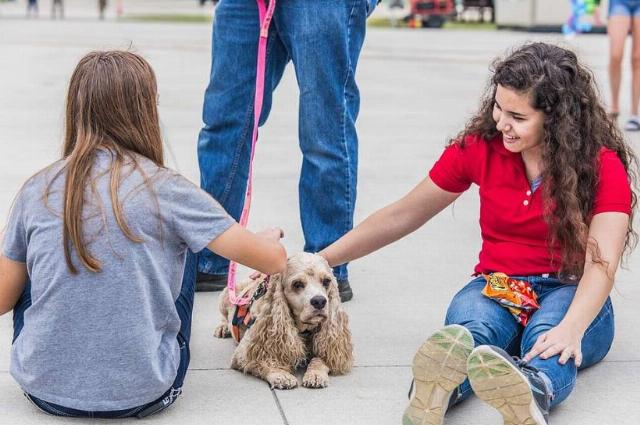


A few years ago, I saw a television commercial featuring a woman watching her son play with a dog. She turned to the camera, smiled, and said, “I love being their mom,” before promoting a product. The phrase struck me as odd -- she was the mother of her child, not the dog. This wasn’t even an isolated case. Numerous commercials portray pets as “fur babies” or siblings to human children, elevating animals to near-human status. We love our pets, but this trend raises questions about our priorities, especially when contrasted with the relative lack of attention given to children in need.
Commercials increasingly depict young adults or couples lavishing affection on pets, often at the expense of human relationships or responsibilities. In one ad, a woman nuzzles her cat while her injured child calls for help. She casually advises him to grab Band-Aids, never looking up from her pet, with the tagline, “You’ll do anything for them,” referring to the animal. In another, a man prioritizes nuzzling a cat over leaving a woman’s bed, even as her husband walks in, shocked. The caption, “They’ll do anything for this,” implies the pet trumps all else.
These ads reflect a broader cultural trend where pets are treated as surrogate children. Dogs and cats, cherished for their loyalty and affection, are celebrated as family members. I understand their appeal -- dogs, in particular, offer unwavering devotion and joy, and my heart aches watching ASPCA commercials showing neglected animals suffering in harsh conditions. Yet, the media’s fixation on pets often overshadows the needs of vulnerable children.
While pet-focused commercials abound, advertisements addressing children’s needs are less common. Programs like Operation Smile, St. Jude Children’s Hospital, and Shriners Children’s Hospital highlight critical issues like cleft palate surgeries and pediatric cancer care. These are vital causes, but they are exceptions in a media landscape dominated by pet-centric narratives.
In 2021, approximately 114,000 foster children in the U.S. were eligible for adoption, yet only 54,200 were adopted, despite one to two million families waiting to adopt. Many children age out of foster care without finding permanent homes. Raising a child is a profound responsibility, requiring at least 18 years of commitment to nurture a human who can contribute positively to society. If you’re a leftist raising little leftists, that may stretch out to 30 or 40 years. In contrast, pets are less demanding, reaching maturity quickly and requiring fewer resources, which may explain their appeal in a society increasingly hesitant to embrace parenthood.
This prioritization of pets coincides with a troubling demographic trend: global fertility rates are declining, primarily in first world countries, but not so in Africa. And while fertility rates have fallen in most Muslim-majority countries they remain considerably higher than in most more-developed countries. The replacement rate for a stable population is 2.1 births per woman, yet the U.S. fertility rate has fallen from 1.84 in 2015 to 1.58 in 2024. This decline contributes to aging populations, workforce shortages, and strained public services. In Australia, demographer Liz Allen has warned of a “human catastrophe” as deaths outnumber births. Similar patterns are seen globally.
Despite these trends, some societal attitudes seem contradictory. Support for policies like abortion and transgender interventions often overshadow efforts to address declining birth rates. Economic pressures, such as the $300,000 cost of raising a child to 18 (excluding college), job instability, and lack of affordable childcare deter many from parenthood. Others prioritize careers, personal growth, or the flexibility of a child-free life. Pets, being cheaper and less demanding, may serve as a substitute for the emotional fulfillment of raising children.
The media’s emphasis on pets over children reflects deeper societal shifts. While pets bring immense joy, their prominence in advertising and culture should not eclipse the needs of vulnerable children or the challenges of declining birth rates. Nations must consider their optimal population size and implement policies to support traditional nuclear families, such as better parental leave or childcare options. By balancing our affection for pets with a commitment to human welfare, we can build a society that values both the joy of companionship and the responsibility of nurturing the next generation.

